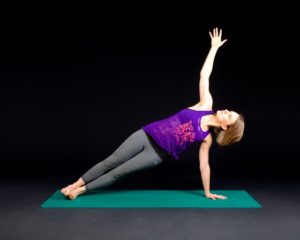If the title of this post sounds preposterous, trust your instincts! But now that I have your attention, let’s explore the real science behind this myth. The truth: at rest and during low-intensity activity when oxygen supply matches oxygen demand the body primarily utilizes fats for fuel. So while you drive a car, listen to music, read a book, type an email, or take a leisurely stroll – your body metabolizes fats to keep you going. This allows the body to preserve the carbohydrate stores (found in the muscle and liver as glycogen) for those more demanding bouts of activity. The problem: this bit of science has been continually misinterpreted and misrepresented to provide unassuming individuals with the recommendation to exercise at a lower heart rate in order to lose weight and burn body fat. This, at best, is exercise quackery.
If we interpret the science how it is meant to be understood, we discover that although a lower-intensity bout of activity prefers fats as the primary fuel source, the caloric expenditure associated with such a low-intensity is not enough to impact total daily caloric expenditure in such a way that it will result in a reduction of body fat/weight loss. In other words, continually engaging in low-intensity exercise will not yield results that match the purported claims or your desired expectations.
The key to positively influencing overall body composition – the ratio of fat mass to muscle mass – lies in understanding how to create a caloric deficit. To lose weight, we need to focus on creating what is termed a negative caloric balance. In other words, the calories burned must exceed the calories consumed (at its most basic level – eat a little less, exercise more). To accomplish this, a healthy, balanced diet and appropriate amounts (and types) of exercise at the right intensity must be priorities.
Aerobic activity, if done at a moderate to vigorous intensity, is the fastest way to burn a lot of calories in a reasonably short amount of time; it is also a very effective way to alter body composition and reduce overall body fat. Some examples of aerobic activity include brisk walking, jogging/running, aerobic dance, step aerobics, cycling/spinning, swimming/aquatics, and stair climbing. The American College of Sports Medicine (ACSM) recommends 3-5 days/week of aerobic activity for 20-60 minutes per session for healthy adults. The best part of aerobic activity is that it can be done in bouts of 10-15 minutes a few times a day; as long as the intensity is similar each time, an individual can receive desired benefits. So, if you do not have 20-60 minutes at any given time, try breaking it up into shorter, more manageable sessions – just remember to work at the same (or similar) intensity each time.
Another important activity factor that favorably impacts body composition is resistance training. While lifting weights for 30 minutes is not as metabolically demanding as performing moderate-intensity aerobic activity for an equal period of time, it is the primary way to build lean tissue (muscle mass). When muscle mass is added, the resting metabolism is increased; muscle is more metabolically active than fat tissue and burns more calories at rest. This means an individual who adds a few pounds of muscle will likely see a reduction in overall body fat. For positive results, engage in 2-3 weekly weight training sessions that focus on all the major muscle groups (chest, back, legs, shoulders, biceps, triceps, and abdominals). Aim for a couple of sets of 8-12 repetitions of each exercise at a challenging weight.
If weight loss and a change in body composition is the goal, knowing where to start is often the most difficult aspect. These recommendations are very general and do not include recommendations for special populations (pre-natal women, diabetics, or any other population with specific health concerns). It is always recommended that individuals seek clearance from their primary health-care provider before making drastic changes to their overall diet and activity patterns.
Navigating through the vast amount of misinformation can prove to be a difficult journey. Understanding the science will help point you in the right direction and assist you in avoiding the pitfalls associated with unfounded claims such as the one discussed today. If the goal is weight loss, maximizing caloric expenditure is the key.

Move it, move it!
Remember this – regardless of your personal wellness and life goals – it really is All About That Balance. Keep going, friends. You’re doing “Well”. 🙂
Happy and Healthy 4th of July!


0 Comments